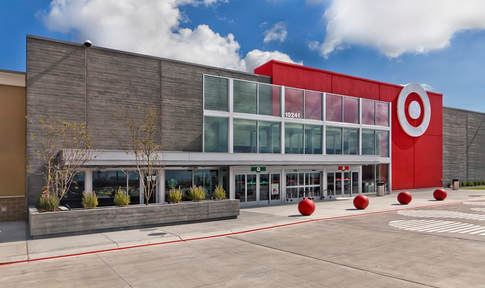Target Corporation (NYSE: TGT) today provided an update on several initiatives as part of its multi-year strategy. This includes the addition of fresh grocery and adult beverages to its Drive Up and Order Pickup services, new milestones for its small-format and remodel programs, and updates to the retailer’s supply chain transformation.
“Target is winning in the marketplace because of our differentiated investment strategy, durable financial model and our team’s incredible work in reinventing the Target run to deliver a shopping experience like nothing else in retail,” said Brian Cornell, Chairman and CEO of Target. “As we look to 2020, we’ll continue to elevate our popular same-day services and expand our ambitious small-format and remodel programs to create an even easier and more convenient experience that inspires our millions of guests to keep shopping Target in new and different ways.”
Enhancements to Same-Day Services
In 2019, Target offered guests more ease and convenience with Drive Up, which saw sales growth of more than 500 percent, and Order Pickup, which saw sales growth of nearly 50 percent. In 2020, Target will enhance these industry-leading same-day services by offering an assortment of fresh grocery and adult beverage items via Order Pickup and Drive Up fulfillment. Guests will be able to order popular grocery items such as milk, eggs, bananas, and more, and have their items delivered directly to their car or ready to pick up at a Target store. Testing will begin in Minneapolis-area stores in the spring, with plans to expand this service to nearly half of Target’s stores in time for the holiday season. Target also will test adult beverage fulfillment through Order Pickup and Drive Up in more than one hundred stores in Florida and Oregon this spring, with plans to expand the service to the majority of its stores by the holiday season.
Record Small-Format Openings
In 2019, Target’s small format stores contributed more than $1 billion in total sales. Following the opening of its 100th small-format store last year, 2020 will be the biggest year to date for Target’s small-format expansion, with nearly three dozen new stores. Throughout 2020, Target will be adding Drive Up to dozens of small-format stores across the country that have parking lots, making it even easier for guests to shop. Target will also begin exploring sites for stores that are approximately 6,000 square feet – roughly half the size of its smallest small-format store – reaching even more guests in urban neighborhoods and on college campuses. The first store lease is expected be signed in 2020, with an opening date in 2021.
New Milestones for Remodel Program
Target remains on track to complete more than 1,000 store remodels nationwide by the end of 2020, with plans for about 300 remodeled stores this year. The average sales lift of a remodeled Target store has been in the range of 2-4% in year one, with an average of more than 2% in the second year.
As part of its remodel program, Target will test a new front-of-store layout that creates an even more welcoming first impression, with fresh flower displays, a curated product assortment, and lower walls and counters to make it easier for team members to offer helpful service to guests. Target will also introduce a transformed electronics department in 200 stores this year, followed by 200 more stores in 2021. The new experience will create a more inviting destination, offering a compelling showcase for top brands and dedicated spaces for the retailer’s trained tech consultants to assist guests in discovering the right products for their needs.
Continued Supply Chain Transformation
To increase the speed and efficiency of its supply chain, Target will begin scaling robotics solutions that have been in development and testing across the country to replenish inventory to hundreds of stores by the summer of 2020. The technology enables precise sorting on an aisle-by-aisle basis to help store team members fill shelves easier and faster while reducing backroom inventory. In 2020, Target also will open new warehouses near key markets, including New York and southern California, to more efficiently replenish stores in high-volume areas.





